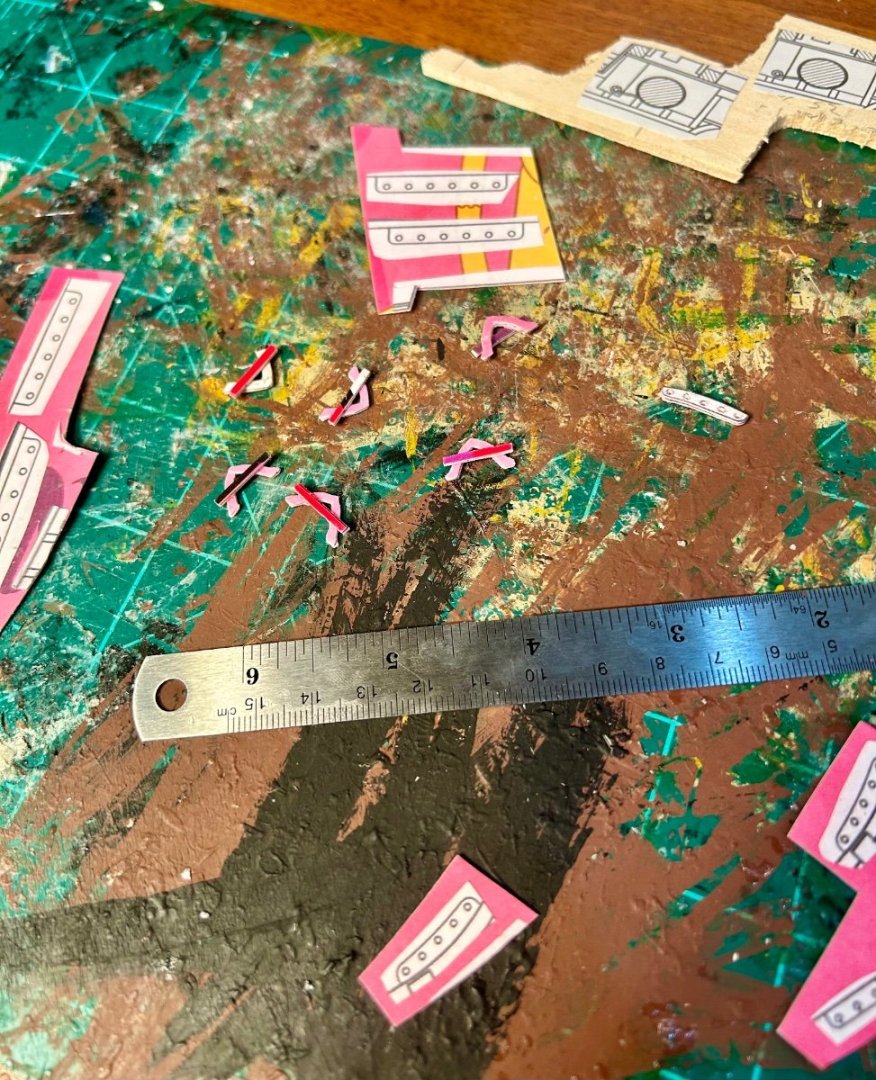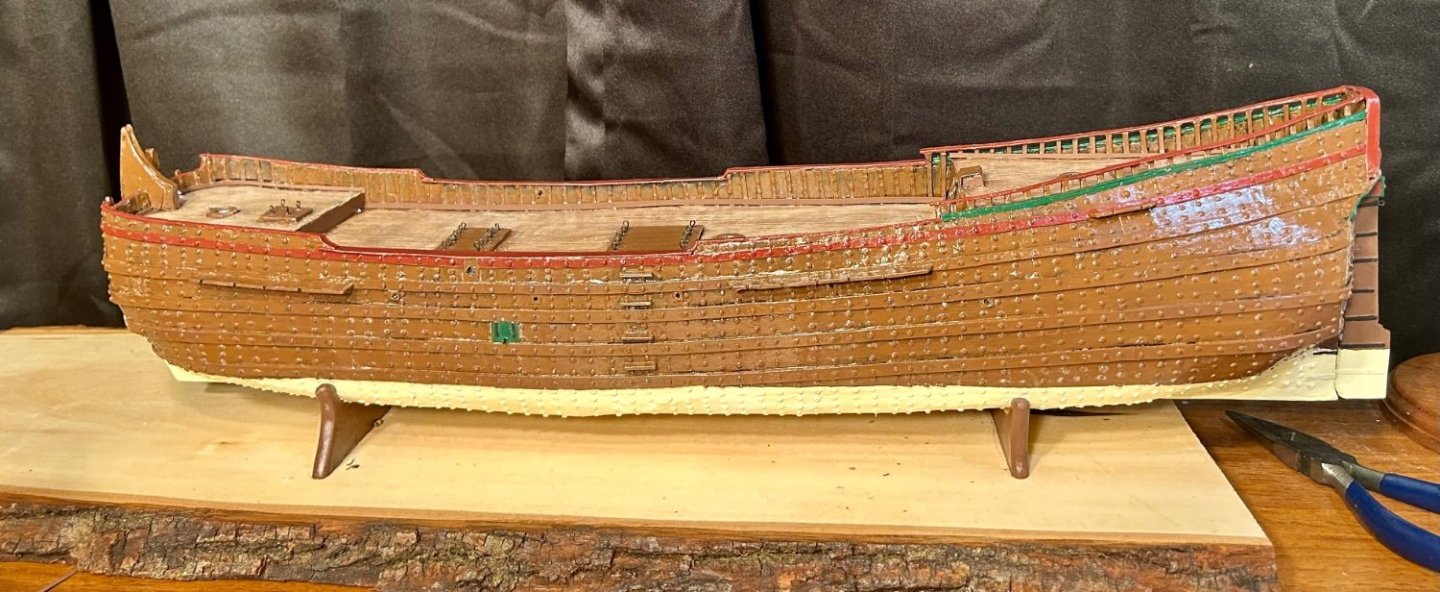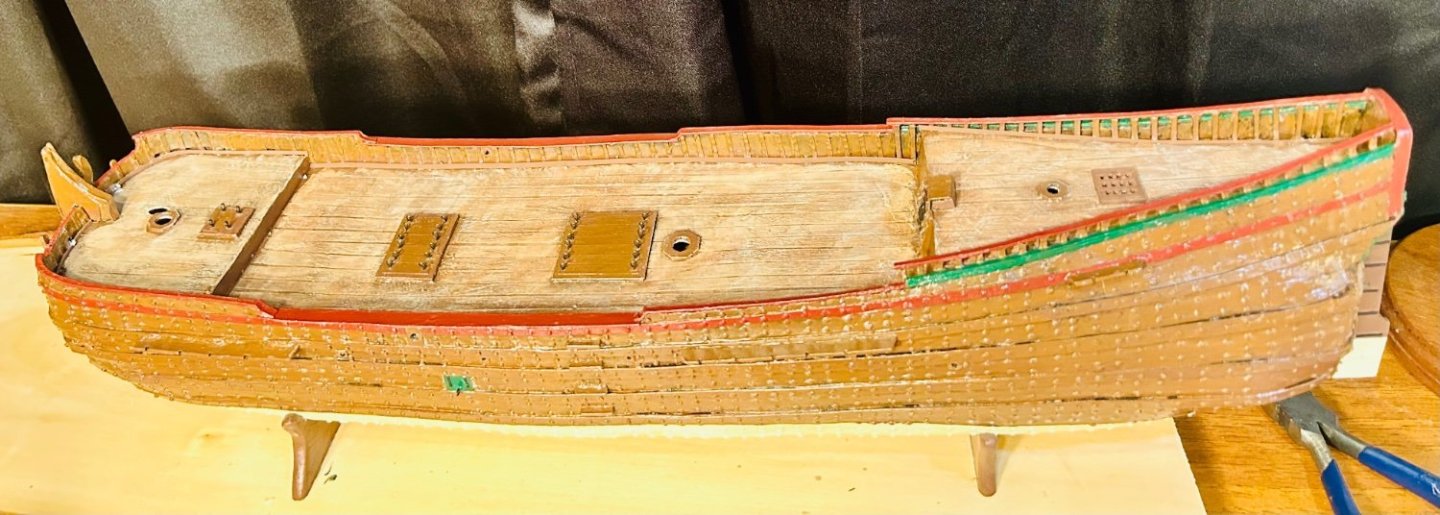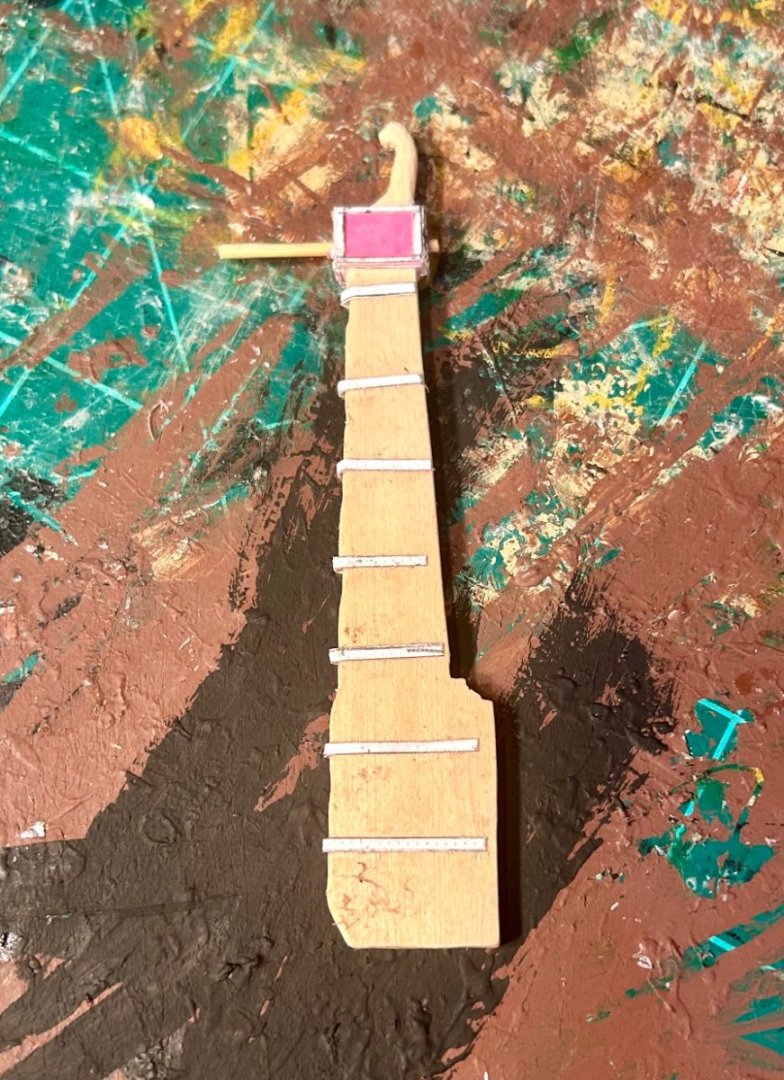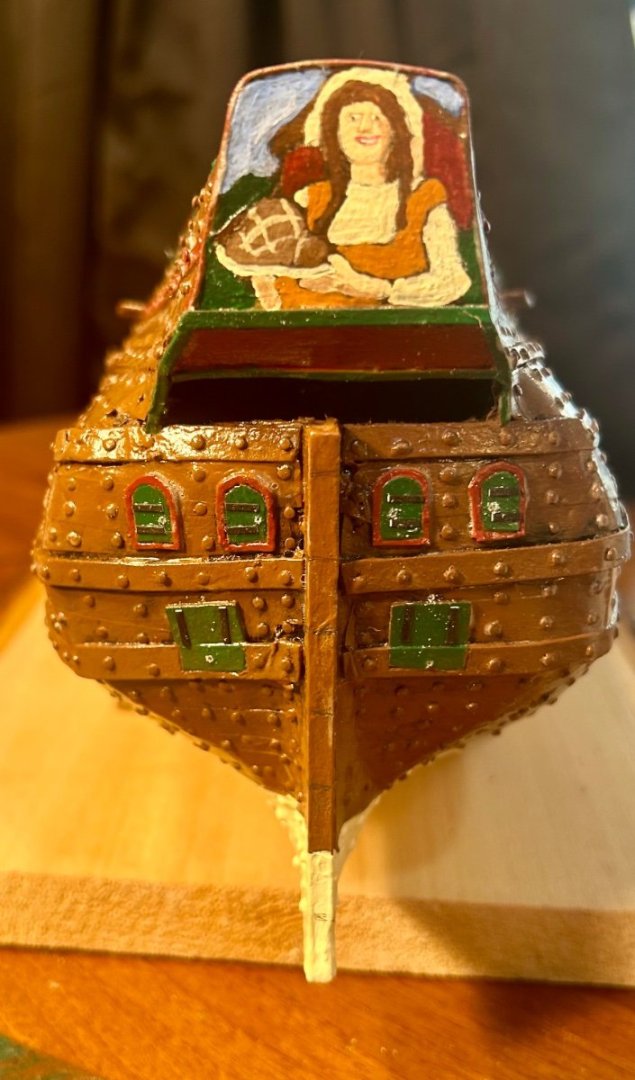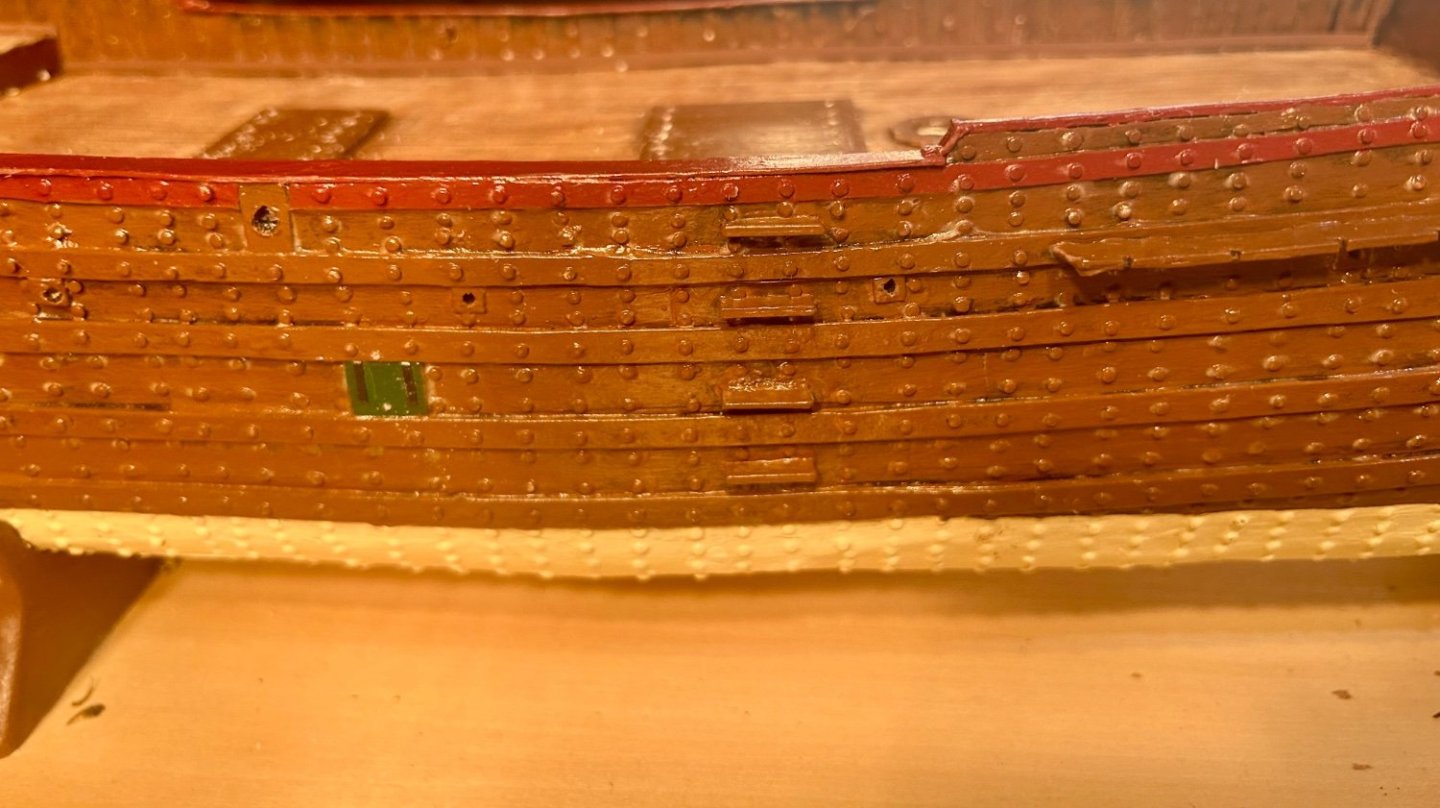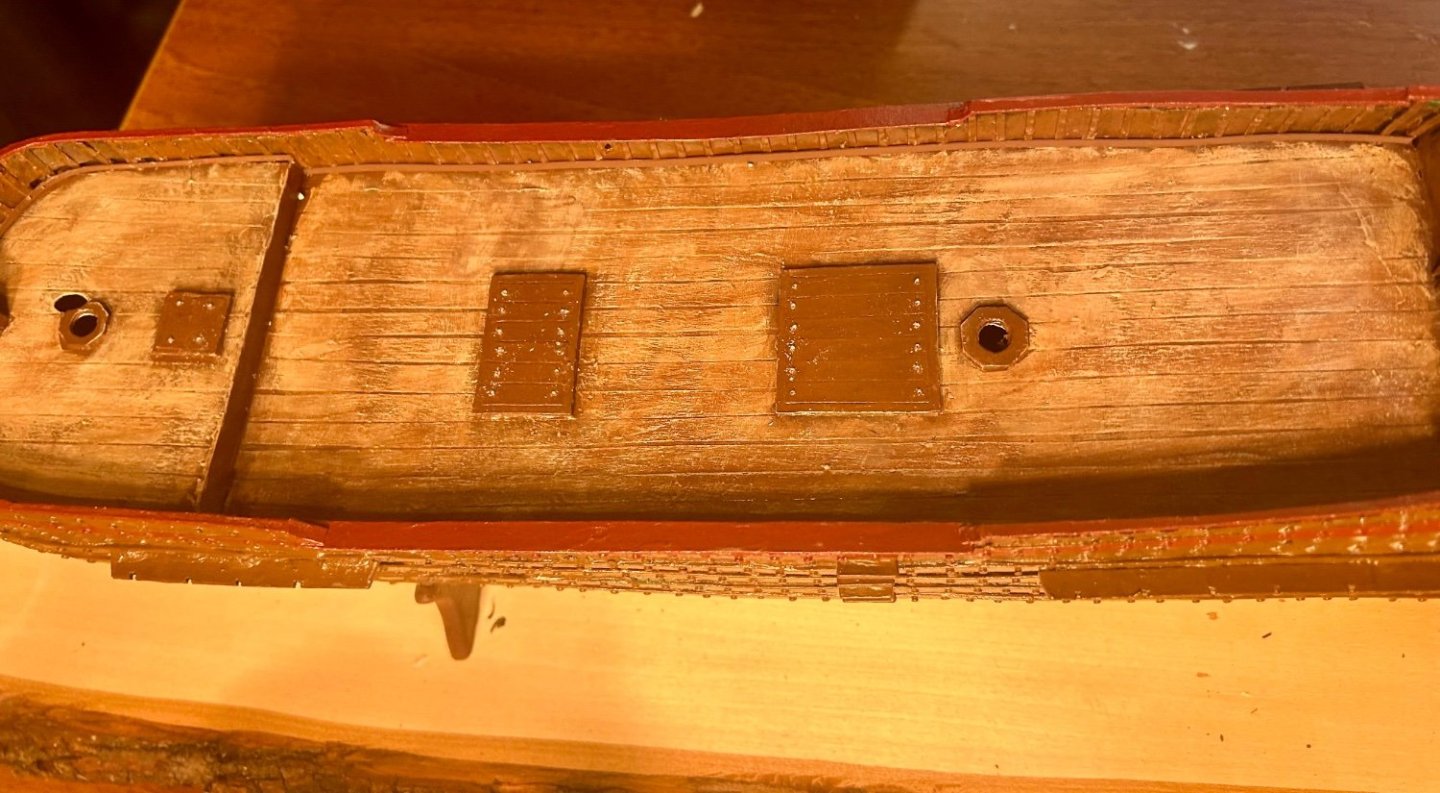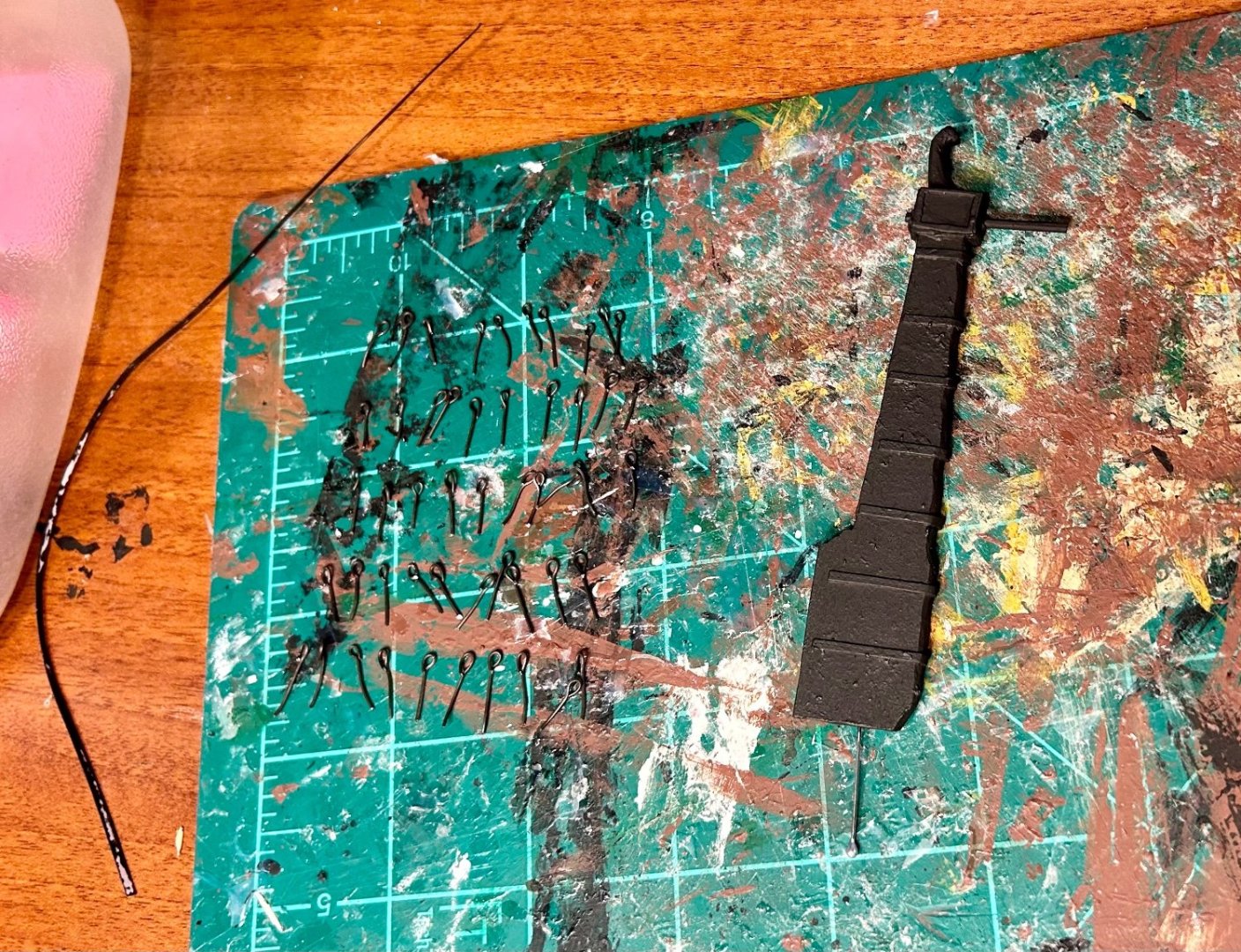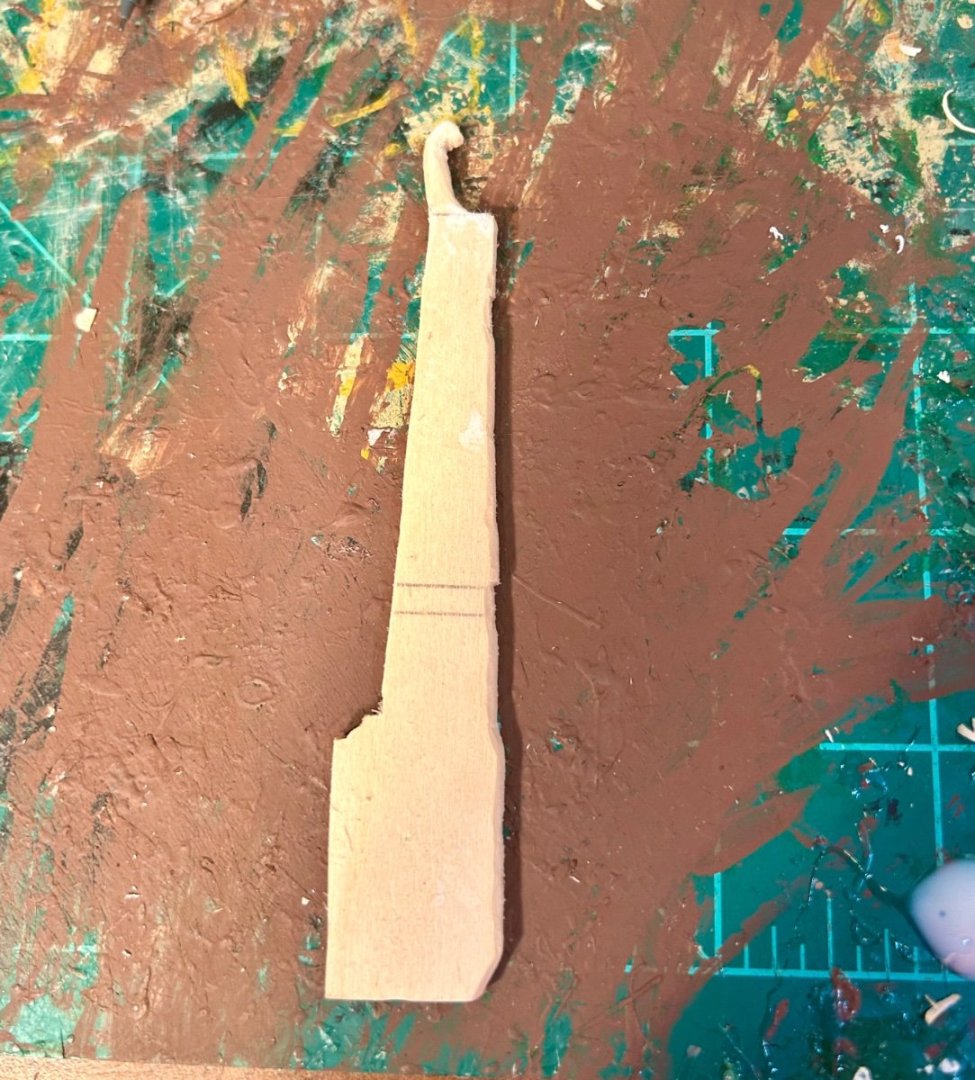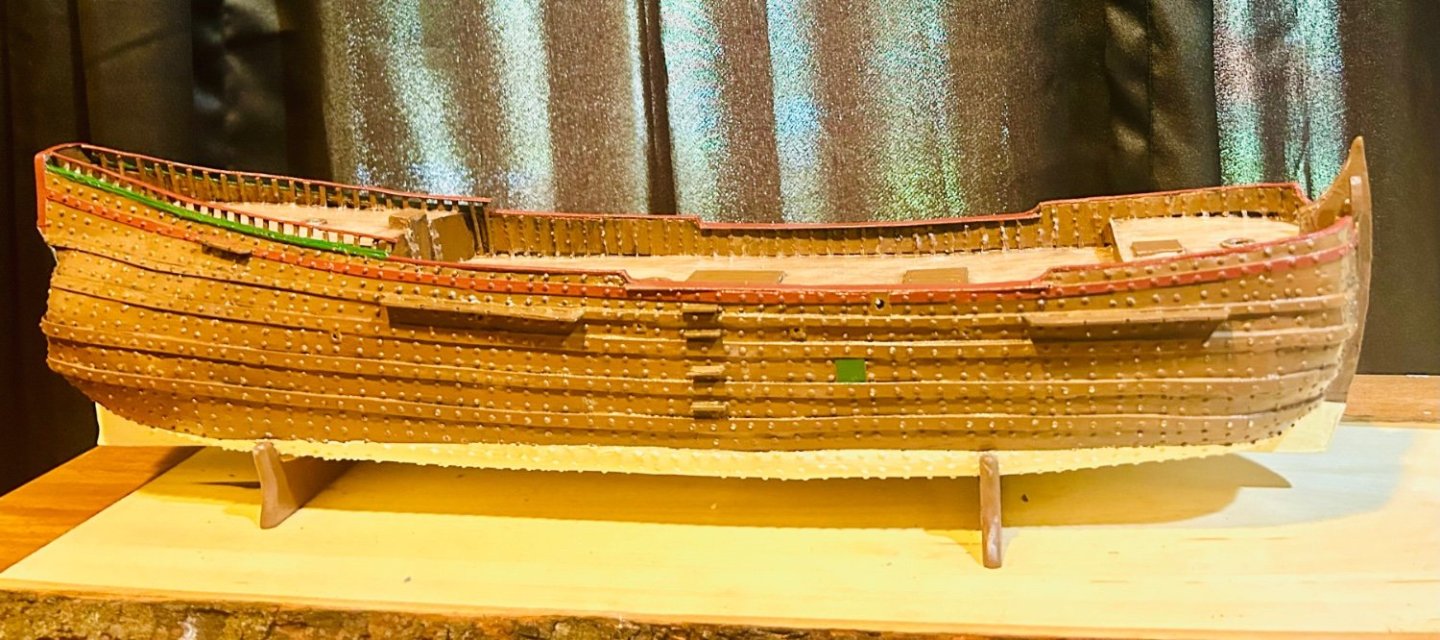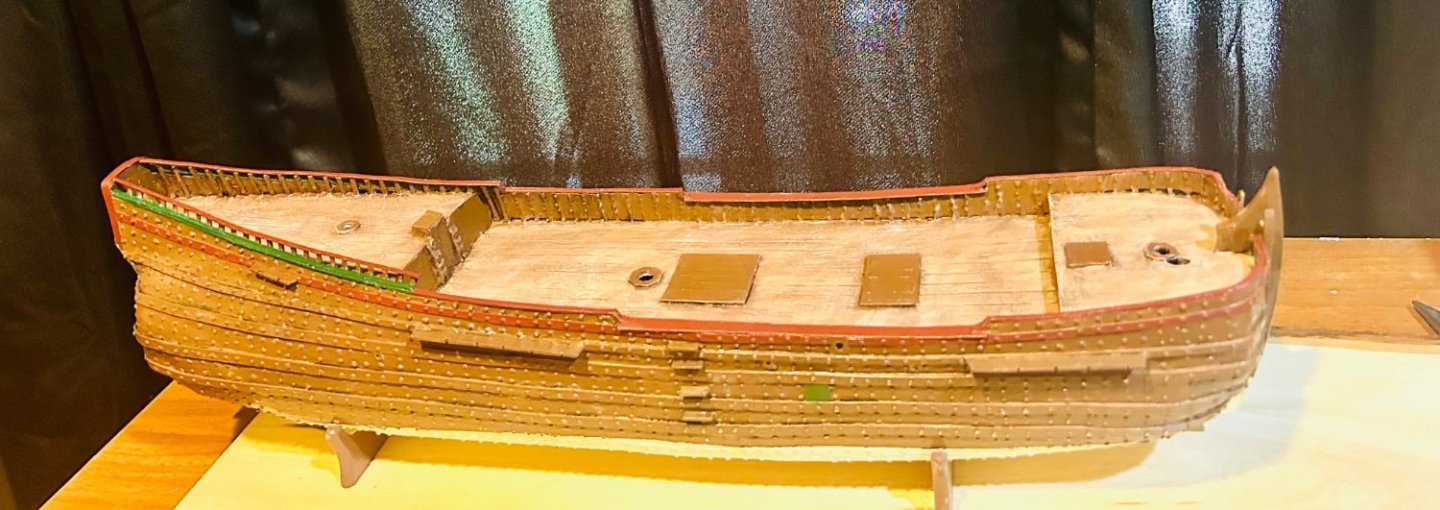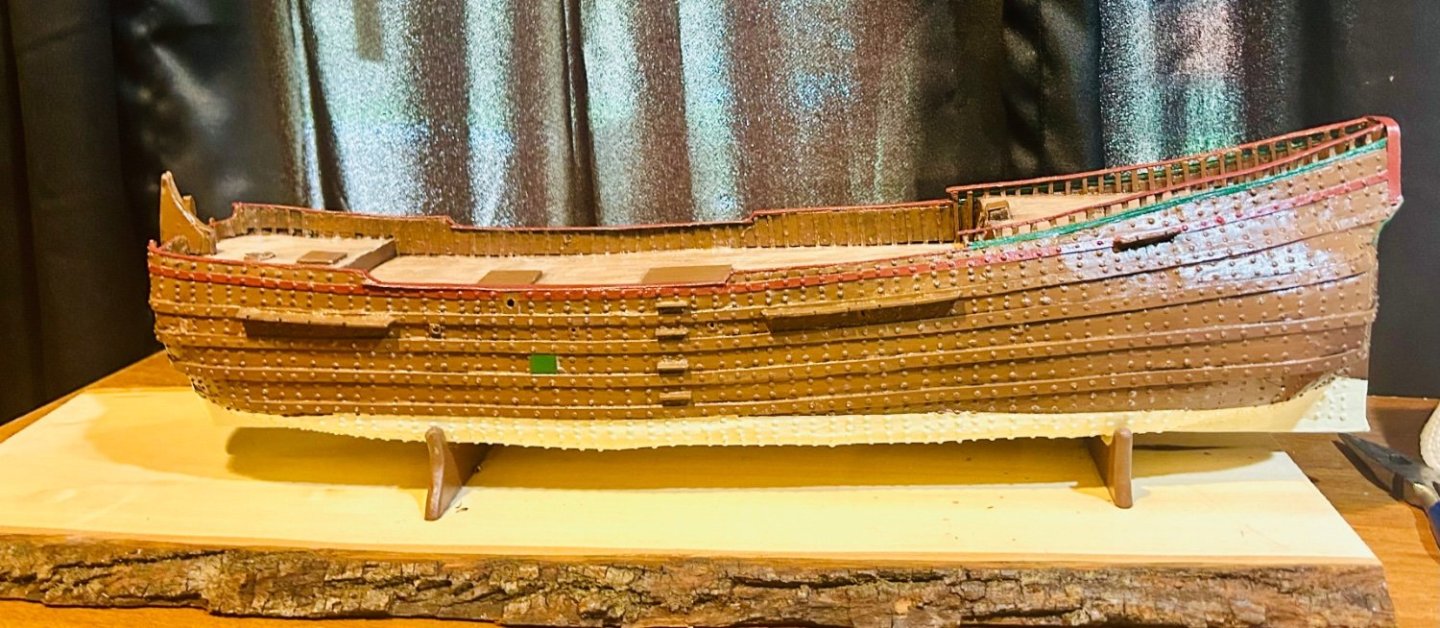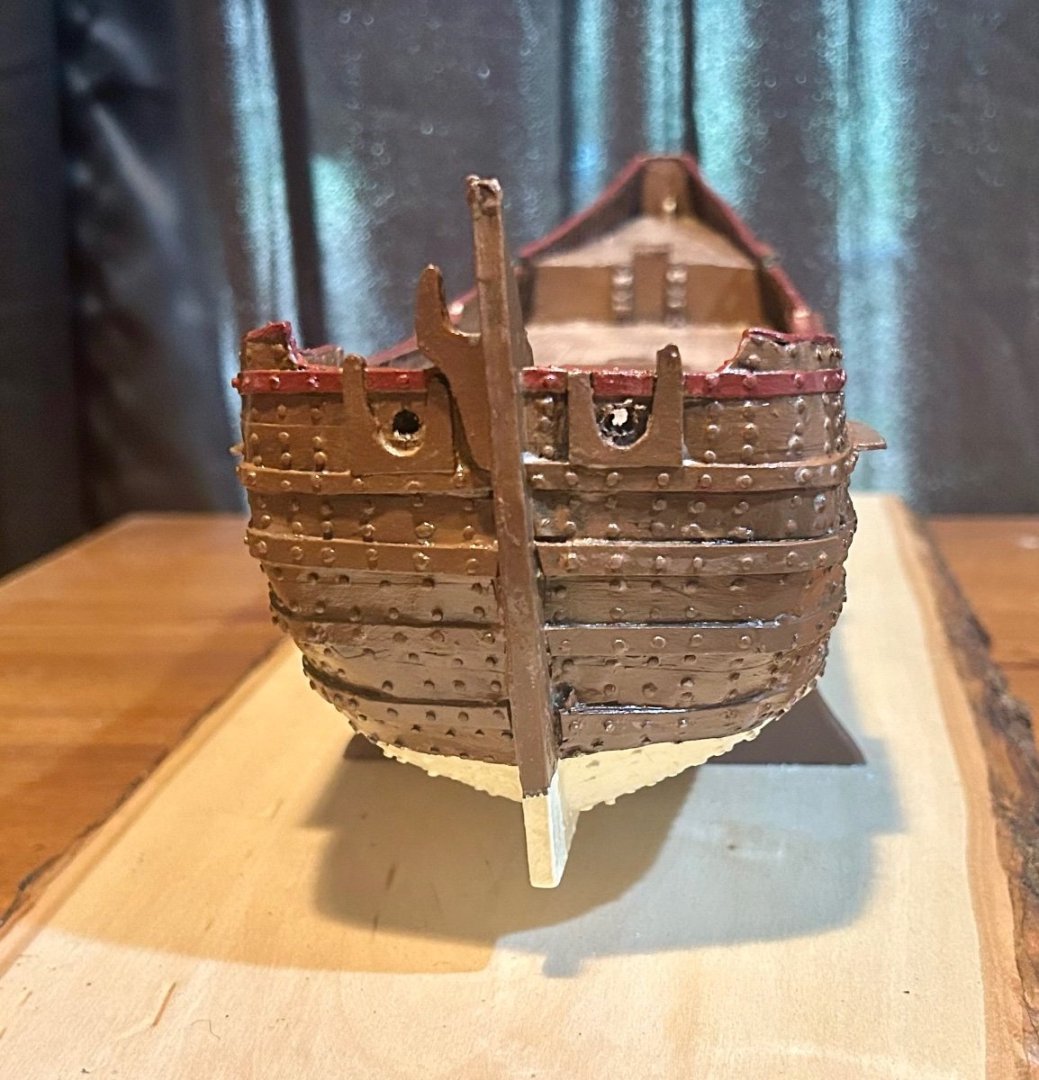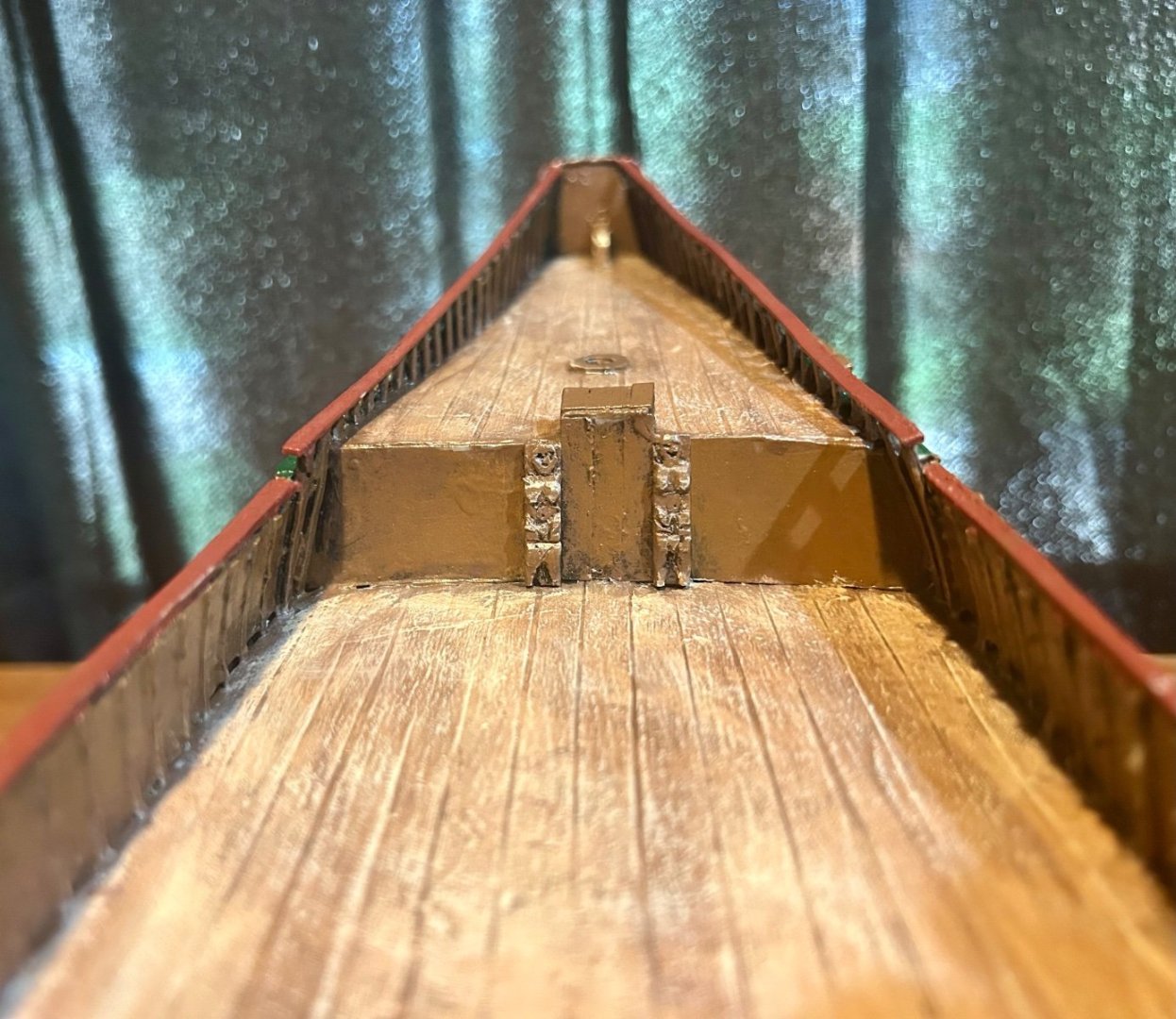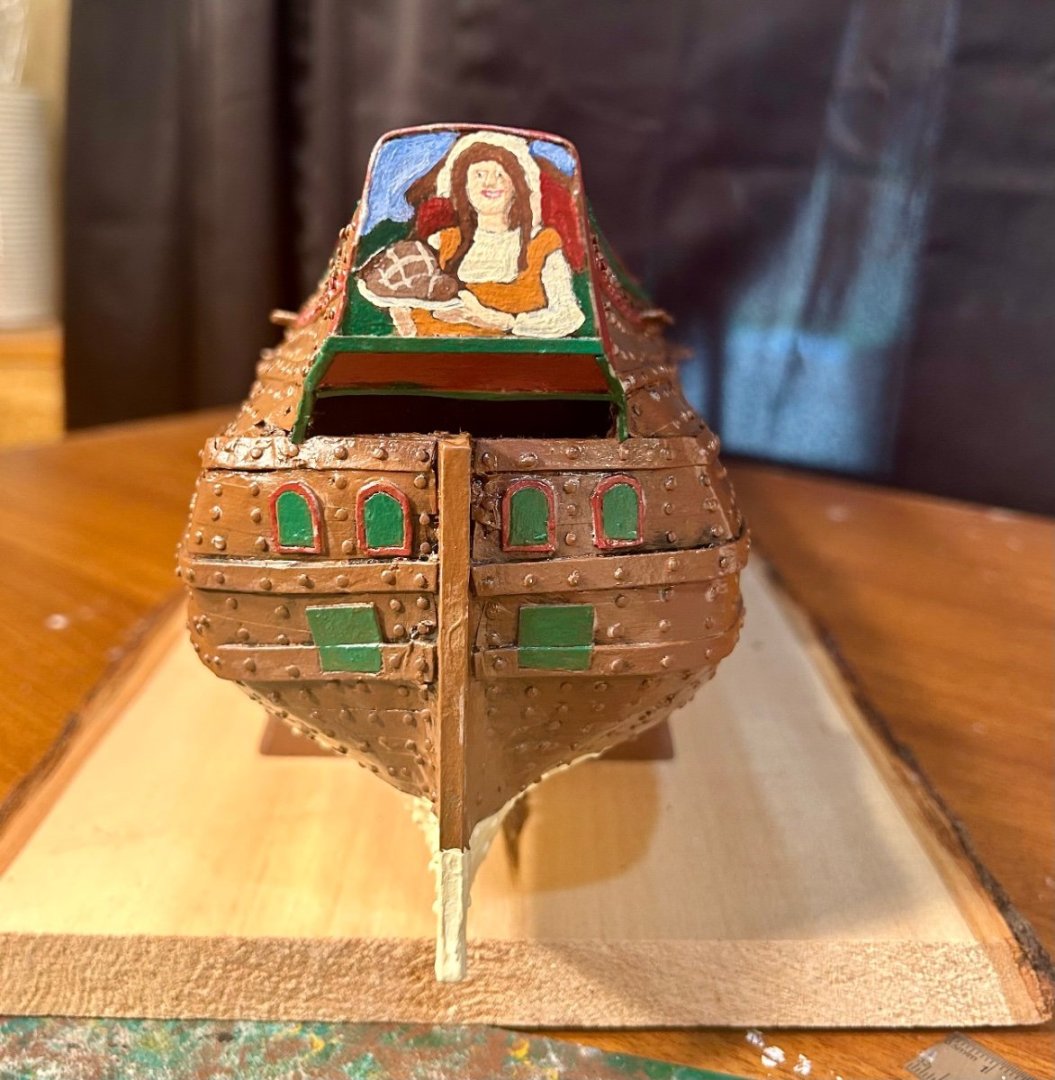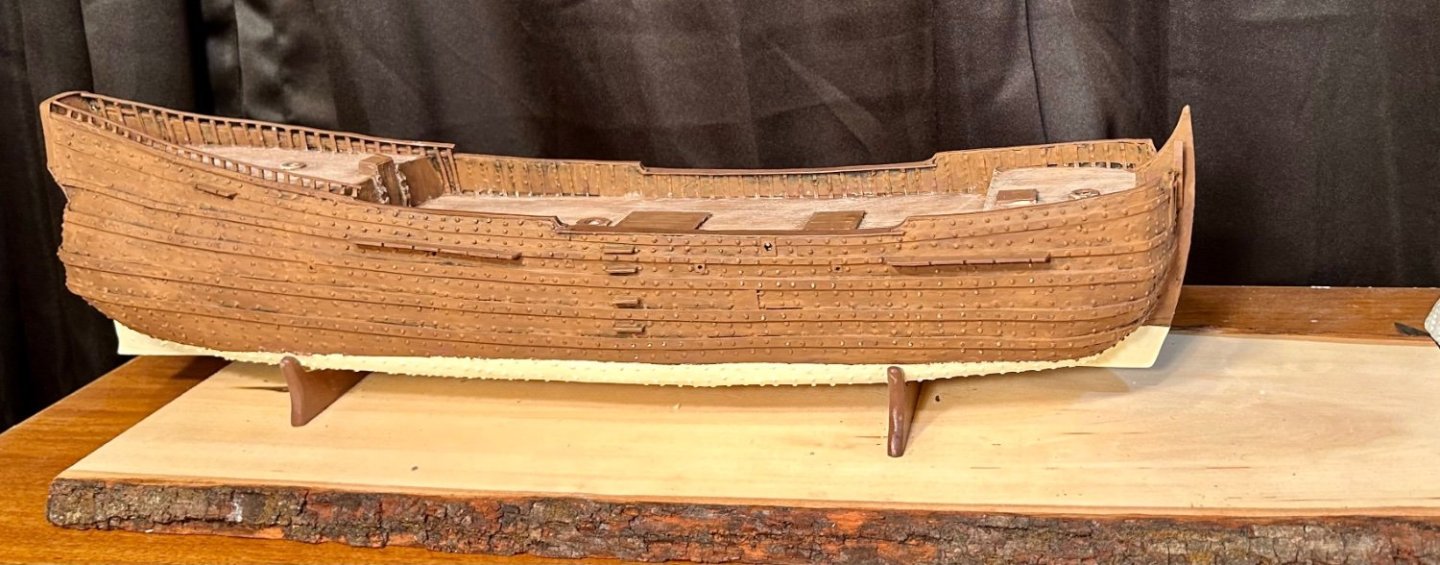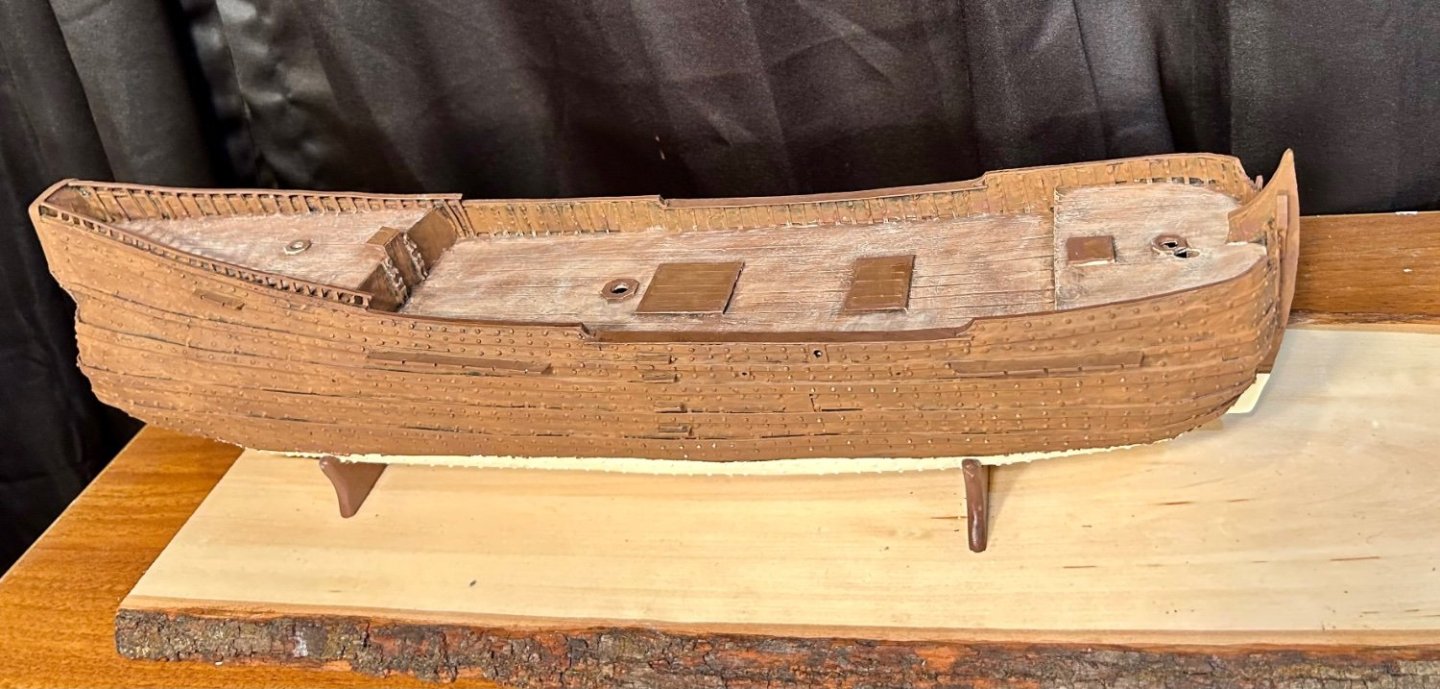
GrandpaPhil
NRG Member-
Posts
4,920 -
Joined
-
Last visited
Content Type
Profiles
Forums
Gallery
Events
Everything posted by GrandpaPhil
-
Working on the inner bulwark fittings: Staghorns are made, pin racks are in process. As mentioned in my Revenge build, I am going to be making belaying pins in the near future for both models at the same time. I want to try and carve them, because at 1/64 it would look better to have actual belaying pins. Those will be among the last fittings that I make for this model.
-
Meriadoc, It is a most excellent book and is one that I value quite a lot. In other news, Esther’s hull is nearing completion. I need to make 48 belaying pins for Esther and since the Revenge would have had similar sizing, and they are in the same scale, I am going to make the 110 belaying pins for the Revenge at the same time. They will most likely be made from toothpicks, carefully carved with a scalpel.
-
Added banding and made holes for eyebolts: Made the rudder and discovered a crooked band when I took the picture: Fixed the band, primed the rudder black, made 50 eyebolts: The piece of strip on the left side is the rudder banding that goes on the hull. I use a straight edge and a pounce wheel to make my banding. The eyebolts are made of blackened annealed wire from a hardware store.
-
The African Queen. My First Listing and First build here.
GrandpaPhil replied to a49kid's topic in New member Introductions
Welcome! -
I like to use beeswax. It makes the rigging line less frizzy and less prone to tangling.
-
Welcome!
-
Work slowly. Use wide jaw tweezers. Only use enough pressure to grip the rigging fittings to prevent them from flying into oblivion. Give yourself plenty of slack on rigging. Run your rigging through beeswax before using it. Remember, you will not know your full capabilities unless you try. If you fail, try again implementing lessons learned from the first try. Most importantly: have fun!
- 34 replies
-
- card
- Revenue Cutter
-
(and 1 more)
Tagged with:
-
The initial base painting is complete, to include trim, minus touchups and sealing a second time: Esther has her full complement of decorations. This includes caryatids which will be left a wood color: And, a transom painting of Esther holding a platter of fresh bread with her home in the background: I do not usually do 2-dimensional painting, and certainly not portraits, much less in miniature. However, I think that came out well enough. I did the painting, but the layout of the picture is the work of an AI image generator.
-
Thank you very much! The plans in Search for Speed Under Sail were pretty straightforward. I ended up researching what most of the lines did to figure out routing and some of the installation. It is important to note that one must make allowances for some rigging routing if you want to install studding sails.
-
Welcome!
-
Welcome!
-
Congratulations! Very well done! Looking forward to the next one! Out of curiosity, what did you use for the rigging?
-
Welcome!
About us
Modelshipworld - Advancing Ship Modeling through Research
SSL Secured
Your security is important for us so this Website is SSL-Secured
NRG Mailing Address
Nautical Research Guild
237 South Lincoln Street
Westmont IL, 60559-1917
Model Ship World ® and the MSW logo are Registered Trademarks, and belong to the Nautical Research Guild (United States Patent and Trademark Office: No. 6,929,264 & No. 6,929,274, registered Dec. 20, 2022)
Helpful Links
About the NRG
If you enjoy building ship models that are historically accurate as well as beautiful, then The Nautical Research Guild (NRG) is just right for you.
The Guild is a non-profit educational organization whose mission is to “Advance Ship Modeling Through Research”. We provide support to our members in their efforts to raise the quality of their model ships.
The Nautical Research Guild has published our world-renowned quarterly magazine, The Nautical Research Journal, since 1955. The pages of the Journal are full of articles by accomplished ship modelers who show you how they create those exquisite details on their models, and by maritime historians who show you the correct details to build. The Journal is available in both print and digital editions. Go to the NRG web site (www.thenrg.org) to download a complimentary digital copy of the Journal. The NRG also publishes plan sets, books and compilations of back issues of the Journal and the former Ships in Scale and Model Ship Builder magazines.



